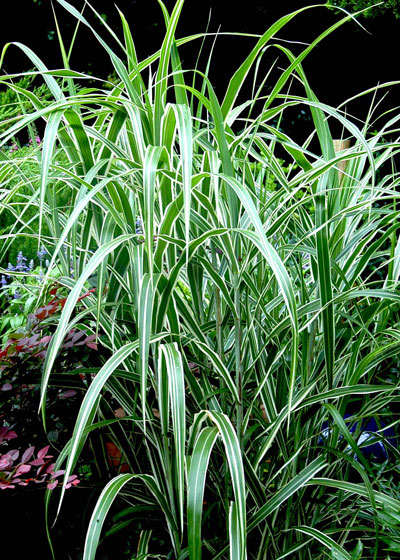‘Cabaret’ grass is a personal favorite

My dad was a range ecologist with Texas A&M. I grew up looking at big fields of grasses. But where he was interested in grasses that sheep and goats would graze, my interests turned toward those that looked great in my garden.
We had pampasgrass and cane back then. I’ve even recently realized that musicians refer to that cane as “bassoon cane” because it’s the source of their reeds. Of course, we had the terribly invasive golden bamboo, too.
But all that said, it seemed to me that the grasses Dad was working with were pretty enough to be in my garden. My horticulture degrees are from Ohio State. I saw ornamental grasses in gardens in the North. I wondered why they weren’t more common back here in Texas.
And then the floodgates opened. All of a sudden we had a dozen or more types of ornamental grasses, and they were being used in all kinds of places – places where shrubs and groundcovers might have been more appropriate.

But I’m going to step aside from that commentary and tell you about one that ought to be used more often. It’s a big sister to the popular maidengrass (Miscanthus sinensis). It has much wider leaves and it grows somewhat taller. Its white variegation is far more prominent and it’s a fabulous landscape addition to the back of a perennial garden.
Meet ‘Cabaret’ grass. Better yet, watch for it in a nursery (perhaps next spring) and give it a try.
Here’s what you’ll want to know…
• Common name: Cabaret (maiden)grass.
• Scientific name: Miscanthus sinensis var. condensatus ‘Cabaret’
• Native to: Asia
• Size: 6 ft. tall and 4 ft. wide.
• Full or nearly full sun.
• Highly organic, moist garden soil.
• Leaves: 3/4-inch wide, 8-14 inches long.

• Evergreen/deciduous: dies to ground with first freeze, but perennial and comes back strongly each spring.
• Flowers: blooms from mid-summer into fall atop foliage.
• Winter hardiness: USDA Zones 6-9 (all of Texas).
• Propagated by division in late fall or early spring.
• Does not produce myriad unwanted seedlings like standard maidengrass. I liked maidengrass, too, initially, until it started sprouting up all over my landscape. This one doesn’t do that.
